If you think of your garden as a stage, then rock gardens are the silent yet captivating performers. They bring texture, permanence, and a grounded sense of tranquility that no flower bed can match.
Rock gardens are like nature’s sculpture galleries — showcasing the raw beauty of stone paired with carefully chosen plants. The best part? They require less maintenance than traditional gardens and can thrive in tricky spots where other plants might give up.
If you’ve been dreaming of transforming an overlooked corner of your yard into a stunning landscape feature or want to create a serene retreat that whispers stories of mountains and rivers, then you’re in the right place.
Why Choose a Rock Garden?

Before we jump into ideas, let’s talk about why rock gardens deserve a spot in your landscaping plans. Rocks are the unsung heroes of outdoor design — they provide structure, reduce soil erosion, conserve moisture, and create microclimates that let special plants thrive. Plus, they offer year-round visual interest, from snow-dusted winters to summer’s blazing sun.
Think of a rock garden as a timeless piece of art that changes subtly with seasons and light. It’s a place where nature and design collaborate, offering a canvas for creativity and a retreat for the soul. Whether you live in a dry climate where water is precious or simply want to add texture to your garden, rock gardens can be a practical and beautiful choice.
1. Classic Alpine Rock Garden
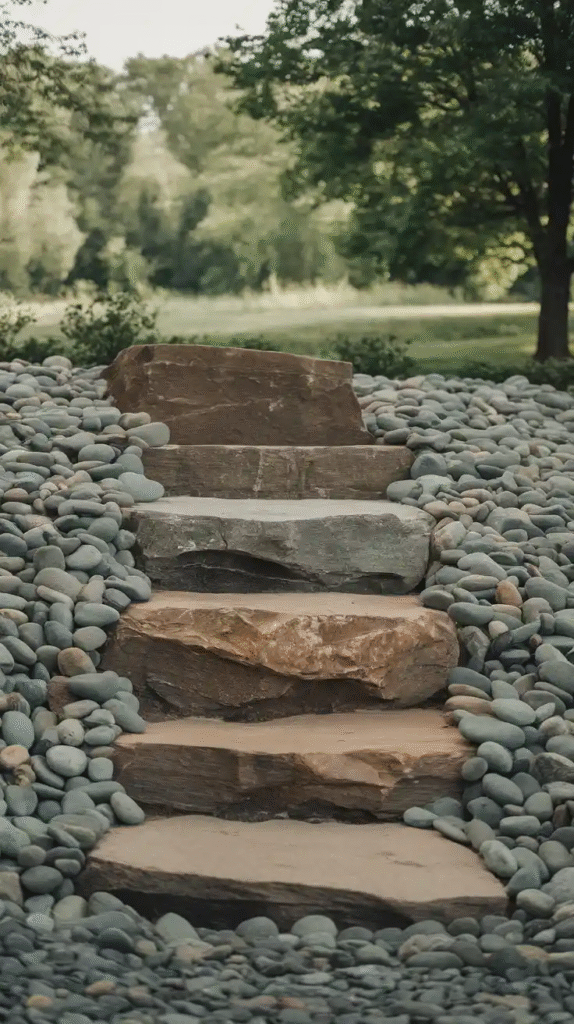
The alpine rock garden is the grandparent of all rock garden styles, inspired by mountainous terrains where plants battle tough conditions. Think of a composition of jagged stones interspersed with hardy succulents, sedums, and dwarf conifers.
Use rocks of various sizes, stacked loosely to mimic natural mountain slopes. The key here is to create drainage pockets so alpine plants don’t drown in water. When I built my first alpine rock garden, I felt like a mountaineer carving out a mini Everest, except this one was my own peaceful peak at home.
2. Zen Japanese Rock Garden
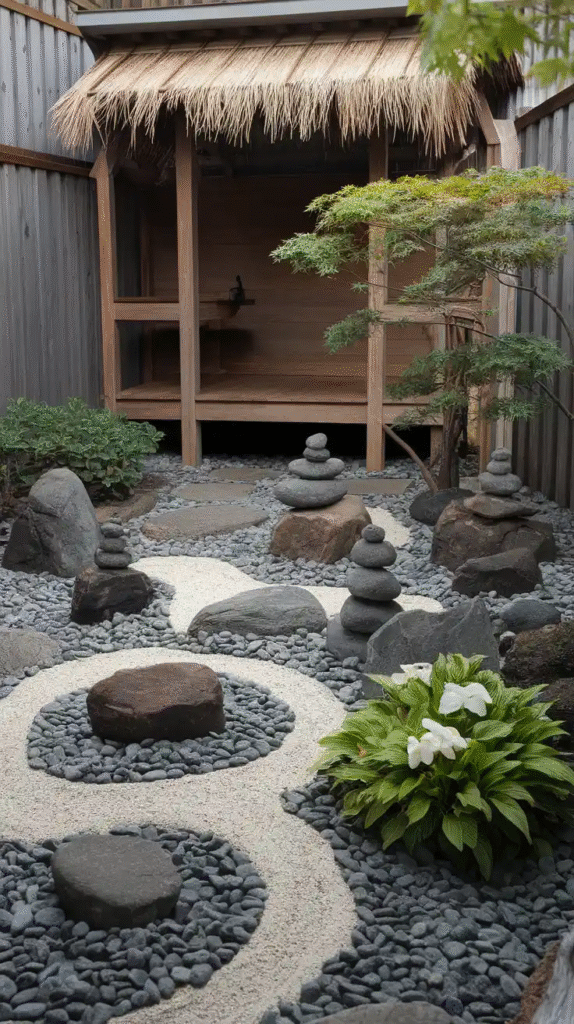
Zen gardens are less about plants and more about meditative simplicity. Imagine raked gravel or sand representing water, with strategically placed large rocks symbolizing islands or mountains.
Minimal greenery, like moss or a few bamboo shoots, completes the look. The Zen garden invites mindfulness, turning your outdoor space into a sanctuary for contemplation. This style taught me patience—raking the gravel felt like painting with invisible ink.
3. Succulent Rock Garden
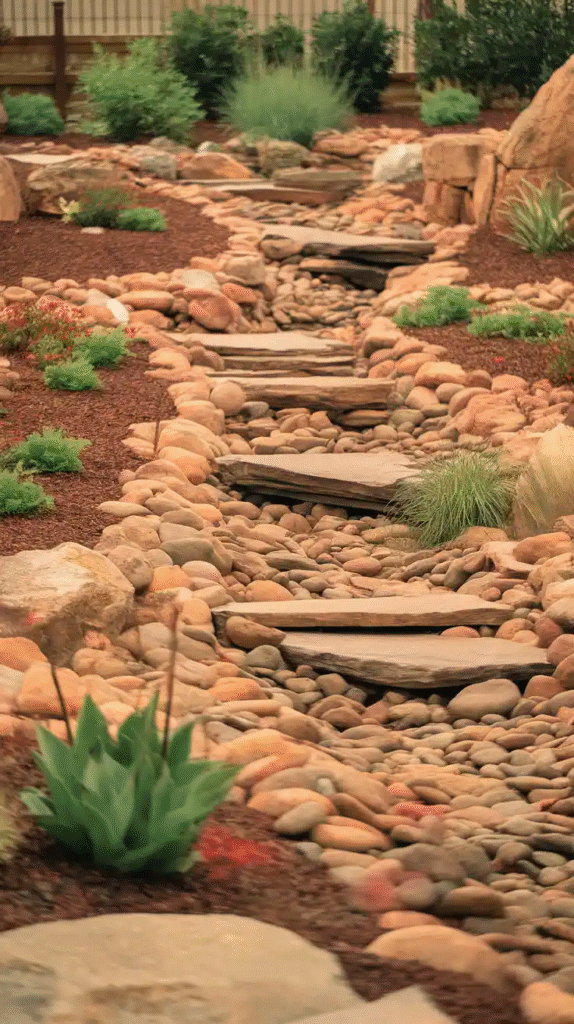
If drought tolerance is a priority, succulent rock gardens are your best friends. These gardens combine a variety of succulents—like hens-and-chicks, agave, and echeveria—planted among stones that reflect their natural rocky habitats.
Use gravel or small pebbles as mulch to enhance drainage and reduce weeds. The cool thing about succulents is their sculptural forms, which pair beautifully with rough, angular rocks. Succulents are like the quirky characters of the plant world—low maintenance but always ready to steal the show.
4. Desert Rock Garden
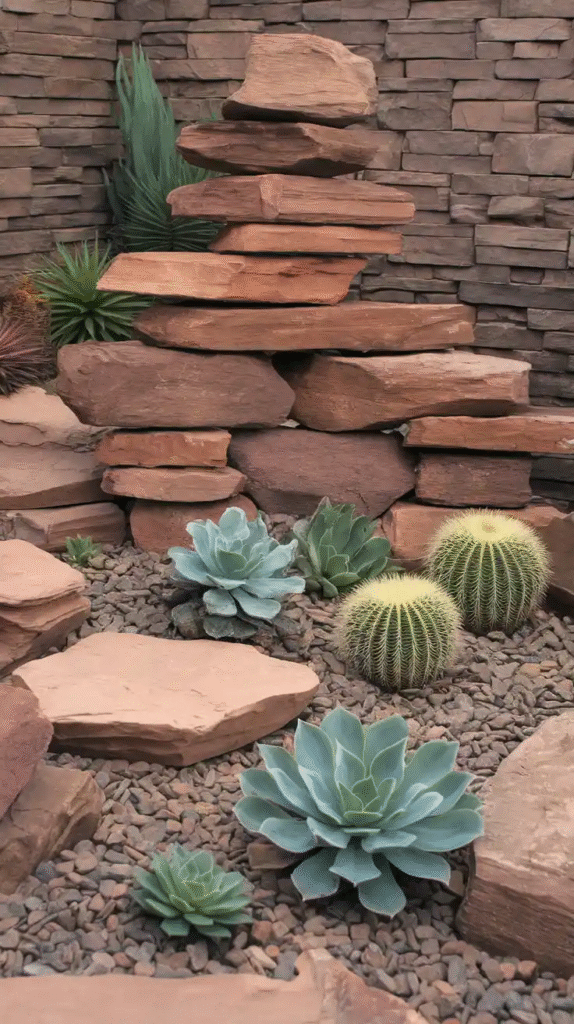
Inspired by arid landscapes, desert rock gardens feature cacti, yuccas, and other xerophytes. Large boulders, sand, and gravel create the backdrop. The emphasis is on texture and contrast—the spiky plants against smooth stone surfaces create visual drama.
If you live somewhere hot and dry, this garden style doesn’t just look authentic—it thrives with minimal water and fuss. I once visited a desert garden that looked like a rugged movie set, but every inch was designed with care and purpose.
5. Woodland Rock Garden
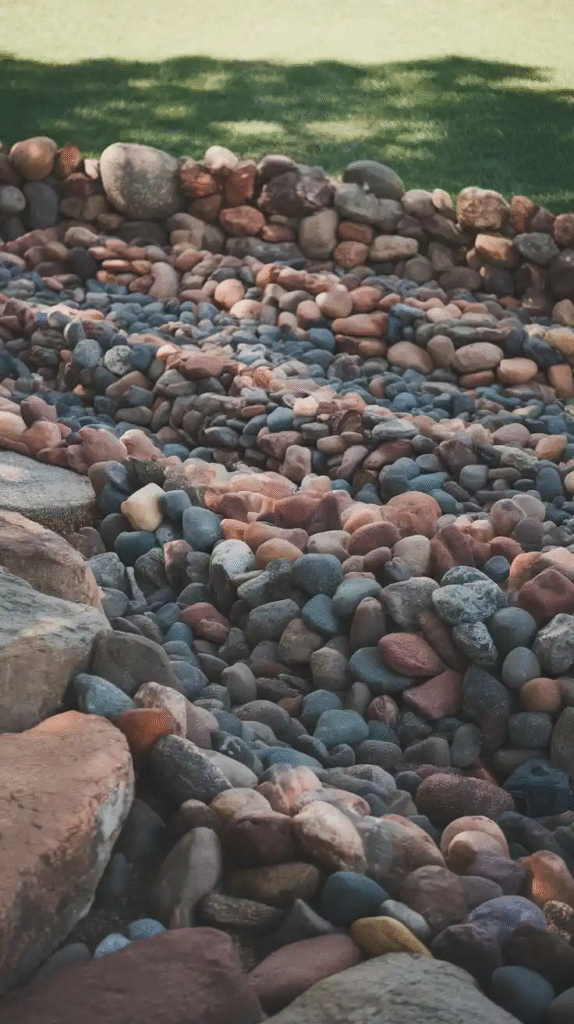
For a softer, shaded vibe, woodland rock gardens mix moss-covered stones with shade-loving plants like ferns, hostas, and bleeding hearts. The rocks here feel older, weathered, and partially buried to mimic a natural forest floor.
Adding leaf litter and organic mulch enriches the soil, making it friendly for woodland plants. This garden style is like stepping into a fairy tale forest—quiet, cool, and lush. I love how the moss carpets around the stones feel like nature’s velvet.
6. Water Feature Rock Garden
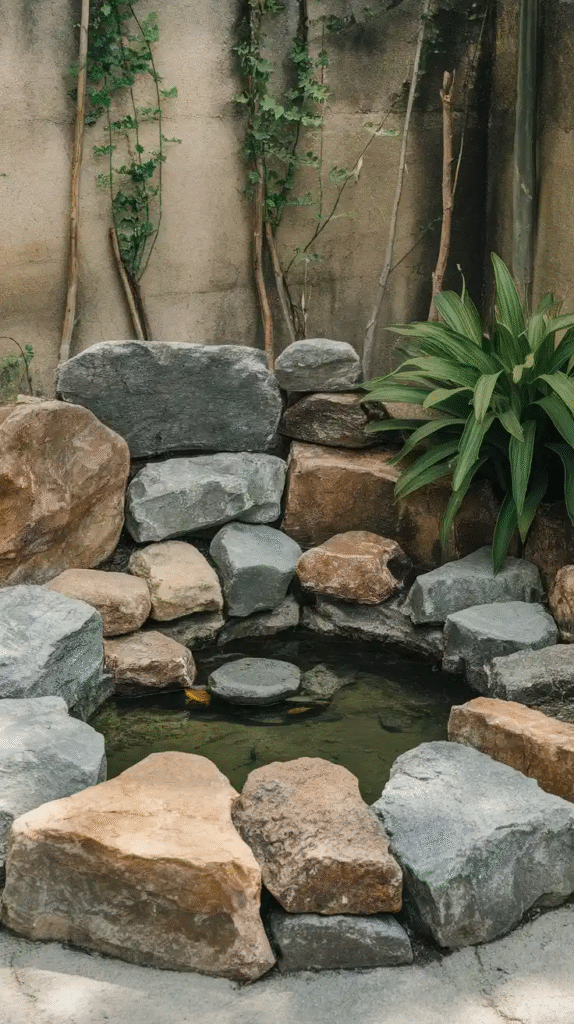
Add movement and sound to your rock garden with a small waterfall, pond, or bubbling brook framed by stones. Water brings life to the stones and attracts birds and insects, enhancing the garden’s ecosystem. Use flat stones as stepping pads near the water for a natural path. I remember the soothing soundtrack of water trickling over rocks in my backyard—it made my garden a personal retreat from the daily hustle.
7. Vertical Rock Garden
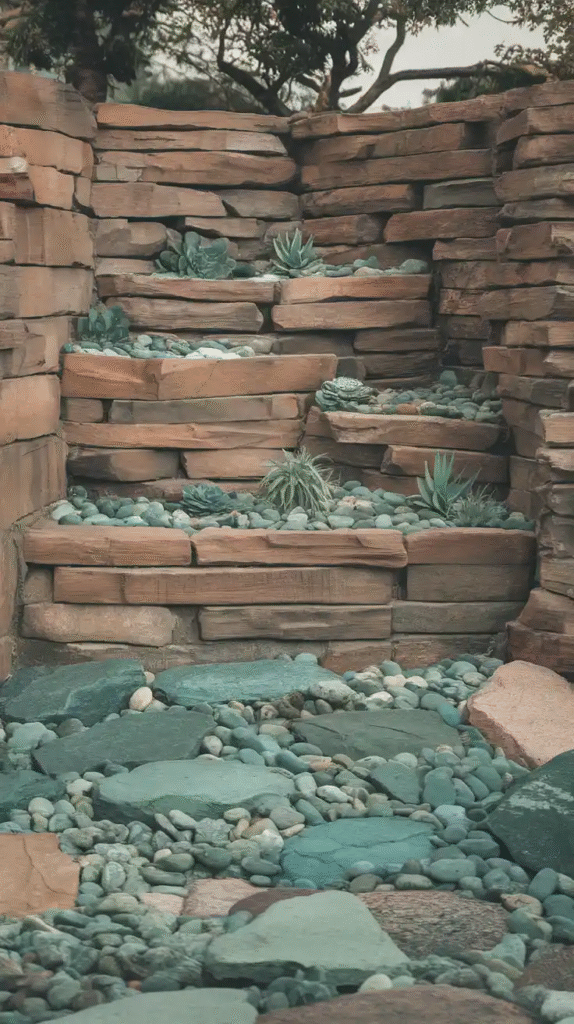
If space is tight, think upwards! Create a vertical rock garden by stacking stones to form walls or terraces that hold pockets of soil for planting. This approach adds dimension and can transform dull fences or retaining walls into living art. Plants like creeping thyme, sedum, or small trailing vines work wonders here. Vertical gardens are like nature’s skyscrapers—compact yet full of life.
8. Rock Garden with Native Plants
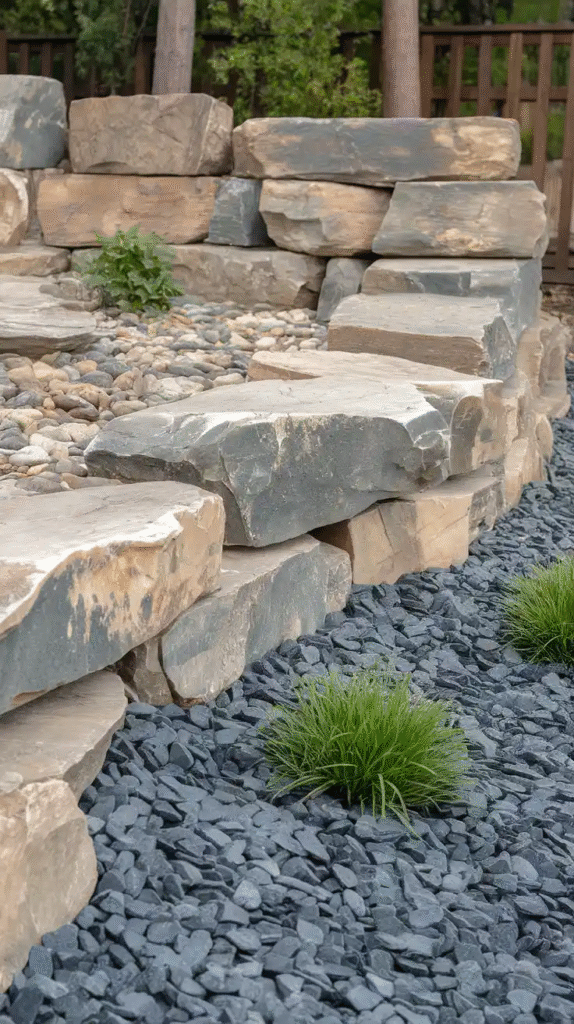
Using native plants in your rock garden ensures they’ll thrive with less care because they’re already adapted to your local climate and soil.
Combine these with local stones or rocks sourced nearby to create a truly authentic look. Native rock gardens are like hometown heroes of landscaping—resilient, low maintenance, and full of character.
9. Modern Minimalist Rock Garden
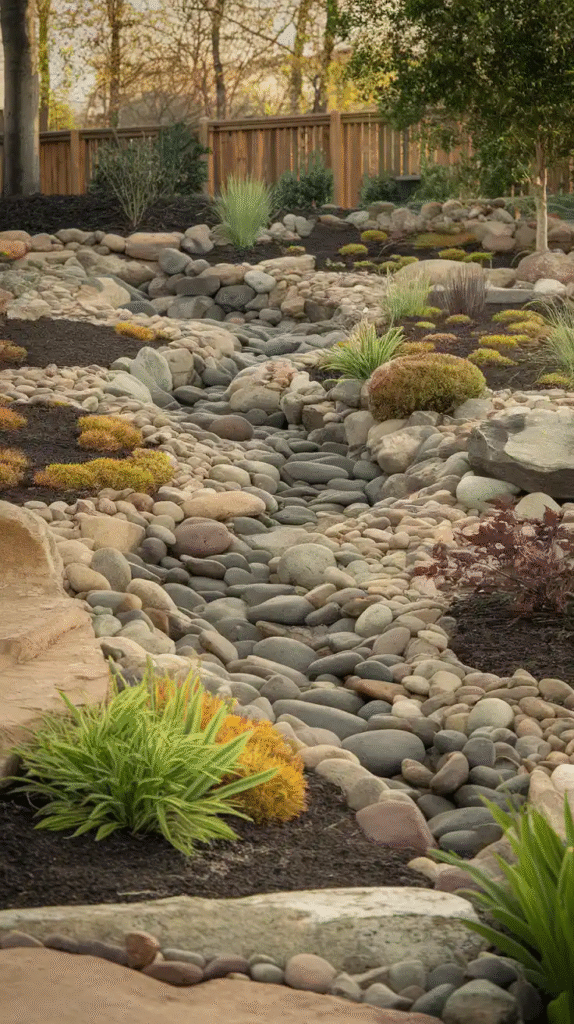
Less is more in minimalist gardens. Here, clean lines, smooth stones, and sparse planting dominate. Think of large, polished river rocks spaced evenly on white gravel with a few sculptural plants like agave or yucca.
This style fits well with contemporary architecture and feels like walking through an outdoor art gallery. My first minimalist rock garden taught me the beauty of simplicity—every stone and plant has to earn its place.
10. Mixed Rock and Flower Garden
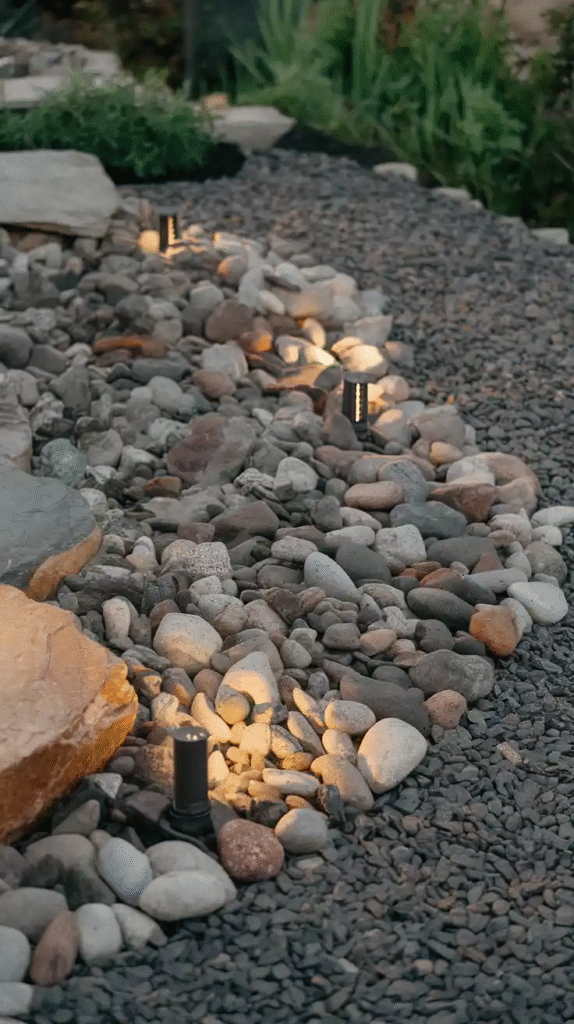
Combine the ruggedness of rocks with the softness of blooming flowers for a balanced landscape. Use larger stones as focal points surrounded by colorful perennials like lavender, dianthus, or creeping phlox.
This blend appeals to both the eye and the senses, as the flowers provide fragrance and seasonal color. I once created such a garden where the flowers framed the stones like jewels, and visitors often lingered to admire the contrast.
11. Rock Garden Pathway
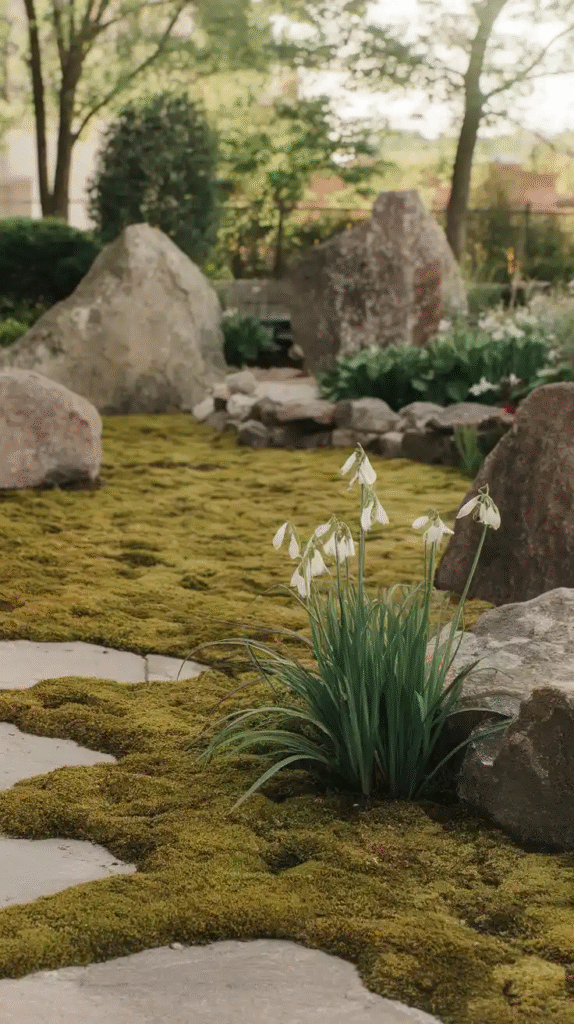
Turn a simple walkway into an adventure by lining it with rocks and small plants nestled between. Use flat stones for stepping combined with smaller pebbles to fill gaps.
Adding drought-tolerant ground covers between stones creates a living carpet. Walking this path feels like a journey through a secret garden every time.
12. Rock Garden with Ornamental Grasses
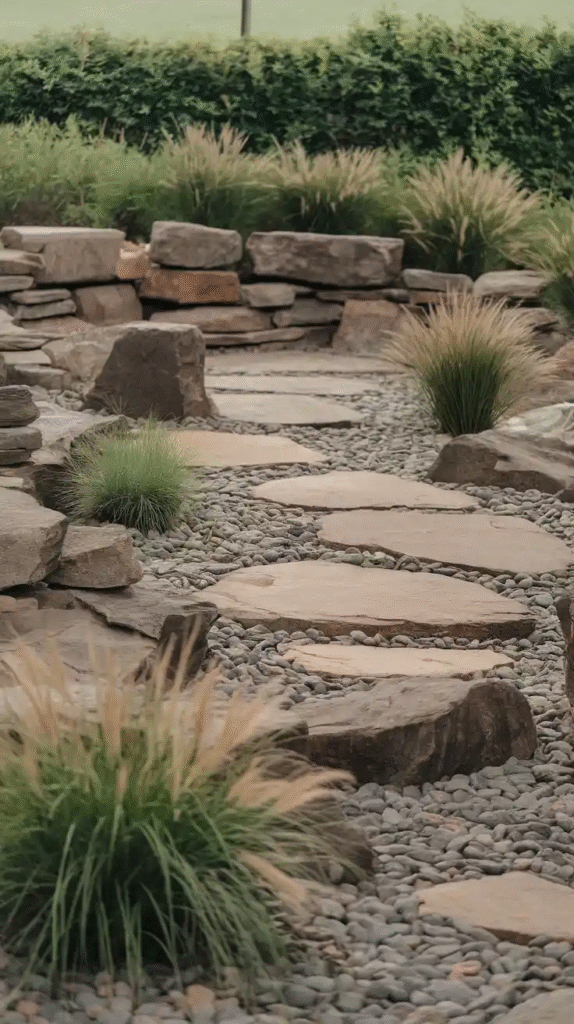
Incorporate ornamental grasses like blue fescue, feather reed grass, or fountain grass for movement and texture. Their wispy foliage contrasts beautifully with solid stone. The grasses dance in the breeze, softening the hard edges of the rocks. This garden type feels dynamic yet grounded, like a jazz solo with steady rhythm.
13. Stepped Rock Garden on a Slope
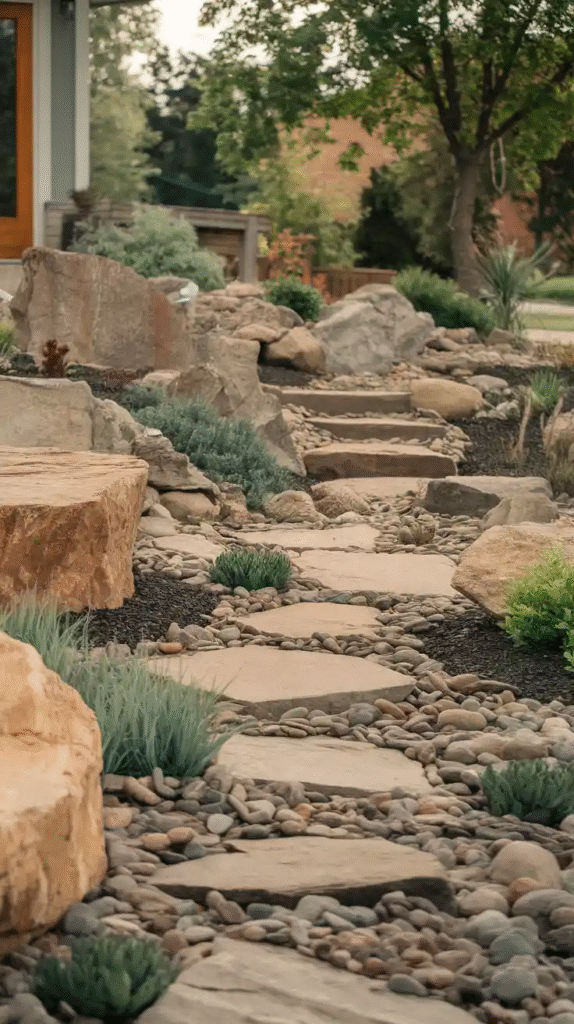
If your yard has a hill or slope, use it to your advantage by creating stepped terraces with retaining walls made of stone. Each level can house different plants adapted to sun and moisture conditions.
This not only controls erosion but also creates a layered, visually interesting garden. I once tackled a steep slope with this method, and the end result was a stunning cascade of rocks and plants that looked like a natural hillside.
14. Rock Garden with Succulent Terraces
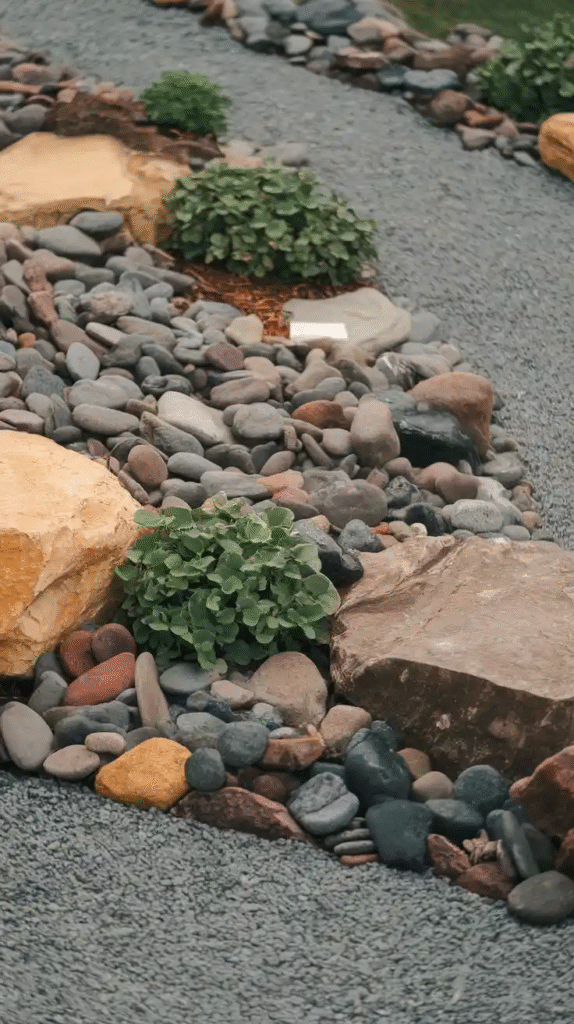
Build raised terraces with stacked stones and fill them with succulents for a Mediterranean vibe. Terraces improve drainage and allow you to mix various soil types for different succulent varieties. This approach is practical and gorgeous, like a stone amphitheater showcasing nature’s most resilient performers.
15. Fairy Tale Rock Garden
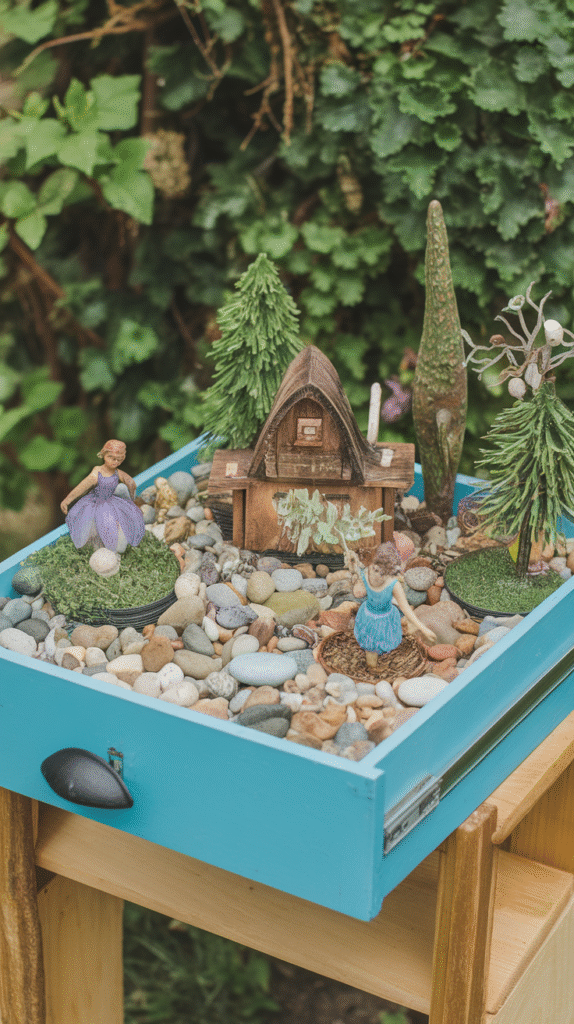
Let your imagination run wild by incorporating whimsical elements like miniature fairy houses, tiny bridges, and statues hidden among the stones and plants.
Use moss, small flowers, and delicate ground covers to create a magical setting. This garden becomes a playground for your creativity and a joy for visitors. My niece loves exploring such gardens, convinced fairies really live there.
16. Rock Garden with Seasonal Bulbs
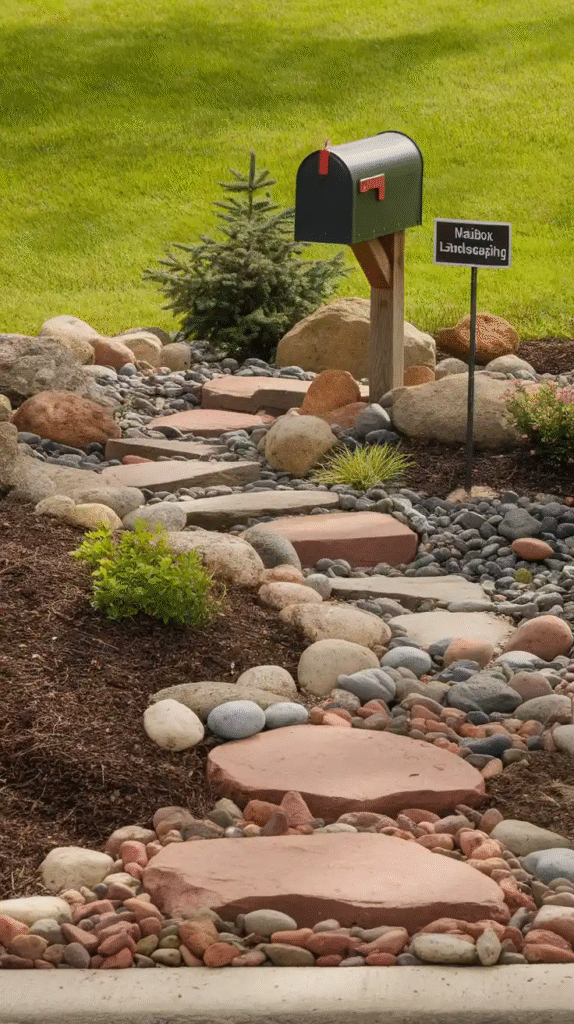
Plant bulbs like crocus, tulips, and daffodils among the stones for bursts of color in spring. Bulbs thrive in well-drained soil that rock gardens provide, and their seasonal show breaks the monotony of stones. This idea is like a surprise party beneath your feet every spring, waking the garden from winter’s sleep.
17. Mediterranean Rock Garden
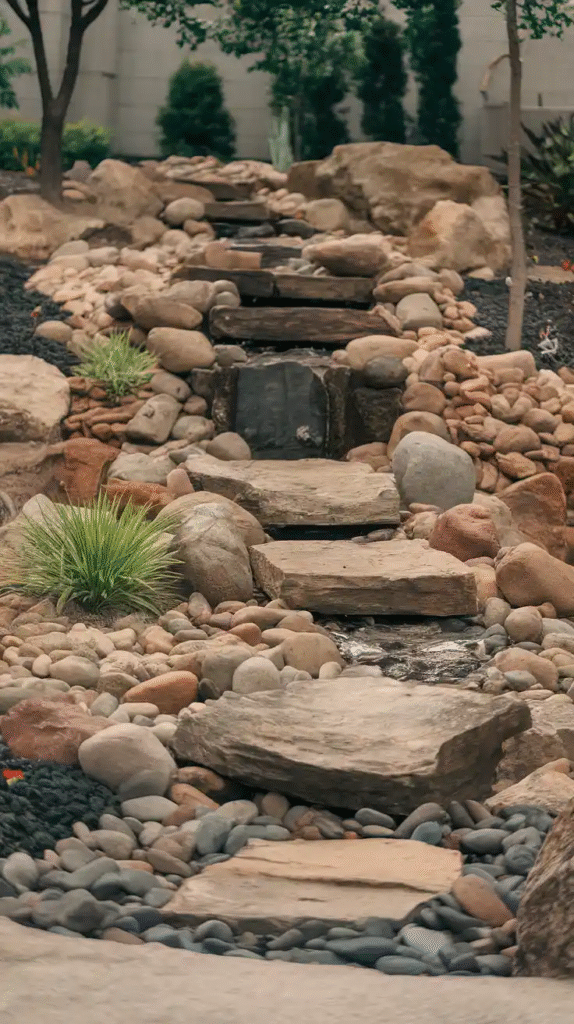
Inspired by the sunny coasts of the Mediterranean, this garden uses terracotta pots, olive trees, lavender, rosemary, and limestone rocks. The palette is earthy and warm, evoking the relaxed elegance of coastal villas.
When I visited a Mediterranean-style garden, the aroma alone transported me to a faraway place where every stone had a story of sun and sea.
Conclusion
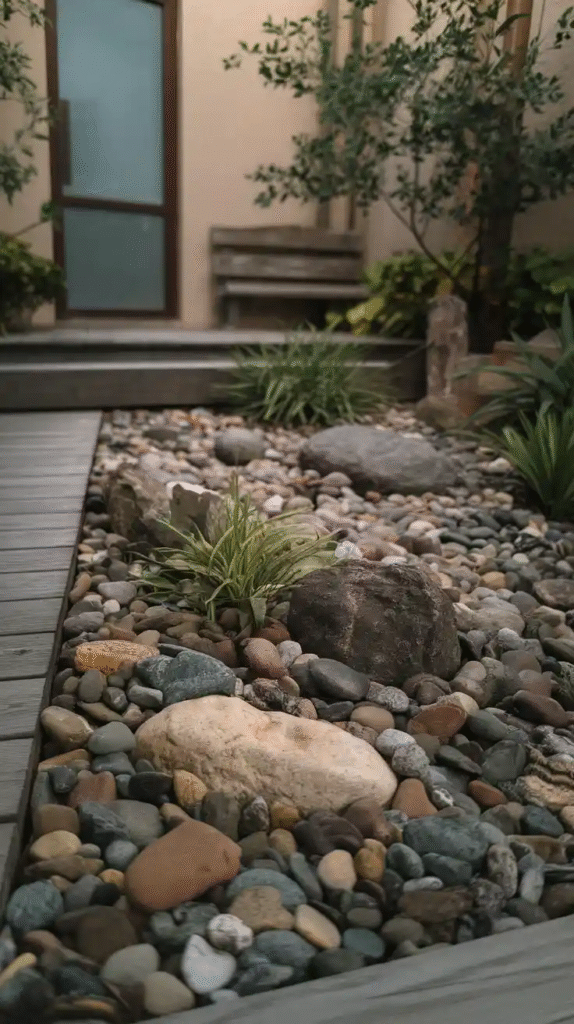
Building a rock garden is like composing a symphony with stone and plant life. Each element—whether a boulder, a delicate fern, or a cluster of pebbles—plays a part in creating harmony and balance.
Don’t rush the process; let your garden evolve like a natural landscape shaped by wind and water over time. Remember, rocks are patient storytellers, holding space for your creativity and offering a timeless stage for nature’s performances.


Leave a Reply